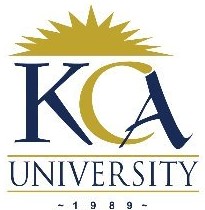
UNIVERSITY EXAMINATIONS: 2021/2022
EXAMINATION FOR THE DEGREE OF BACHELOR OF SCIENCE IN
SOFTWARE DEVELOPMENT/ BUSINESS INFORMATION
TECHNOLOGY
BSD 2108/ BBIT 207: SYSTEM DEVELOPMENT METHODOLOGY
FULL TIME/ PART TIME/ DISTANCE LEARNING
DATE: DECEMBER, 2021 TIME: 2 HOURS
INSTRUCTIONS: ANSWER QUESTION ONE AND ANY OTHER TWO QUESTIONS
QUESTION ONE (20 Marks)
a) A company has over the years used software development methods that rely on documented
specifications and designs. Agile methods are being considered seriously in the pursuit of growth
and internationalization of the business.
i. Explains the agile principles for rapid software development and justify its
appropriateness as a method for adoption. (5 Marks)
ii. Discuss the view that modern life cycle models with their emphasis on prototyping,
create systems that are often fragmented and difficult to integrate; of unsatisfactory
reliability, performance, and functionality; and of limited longevity. (5 Marks)
b) An IT organisation has decided to introduce a new system development method for use in
various projects. Identify possible problems and risks which may affect the introduction of the
new method and the measures that could be adopted to avoid these problems and risks.
(5 Marks)
c) A newly-established online training company was interested in creating a website to allow
students to enrol on their training programmes over the Internet. What should the company
consider when deciding on whether to invest in a custom, packaged or outsourced system solution?
( 5 Marks)
QUESTION TWO (15 Marks)
a) You are in charge of five software development projects. The project characteristics of
each of the sys are as follows:
• Project 1. Web-site for a local company. Relatively small system. Requirements are vague and
likely to change in the near future.
• Project 2. A very large embedded system whose requirements can be easily identified and are
relatively stable.
• Project 3. A ‘standard’ business application. You have developed similar systems in the past.
• Project 4. A relatively complex administrative system for one of the local hospitals. Some of
the requirements seem to be pretty vague, but all the requirements are stable.
• Project 5. A small real-time control system to be used for monitoring patients in a local
hospital.
Consider the following software development approaches/models: waterfall, throw-away
prototyping, evolutionary prototyping, component-based development, formal development.
Which of the above approaches/models would you choose for each of your projects? Justify your
choices by discussing advantages, disadvantages and when to use. (15 Marks)
QUESTION THREE (15 Marks)
a) A College was interested in creating a website to allow students to enrol on their training
programmes over the Internet. What should the company consider when deciding on whether to
invest in a custom, packaged or outsourced system solution? (10 Marks)
b) Systems analysts need to communicate and interact extensively with users. However the
“vocabulary” of systems development is often not familiar to users and the organisational
backgrounds and experience of systems analysts may be very different from those of users. What
problems might this cause during the requirements definition phase in particular, and how might
they be overcome? (5 Marks)
QUESTION FOUR (15 Marks)
a) Poor user interface design is the reason why so many software systems are never
used. State and explain four human factors that you would take into consideration
when designing a user interface. (5 Marks)
b) An irrigation software system has a module that reads environmental factors (temperature(T)
and humidity in the air (HA) and the humidity in the soil (HS). If HS is less than x and HS is less
than y and the temperature is between t1 and t2, then the software system will switch on the
sprinklers otherwise for the same conditionals of HA and HS, if temperature is below t1 the
software system will switch on the flood watering systems. After analyzing the given scenario,
construct a flow chart diagram for the system. Ensure that your diagram has the smallest number
of items possible. (10 Marks)